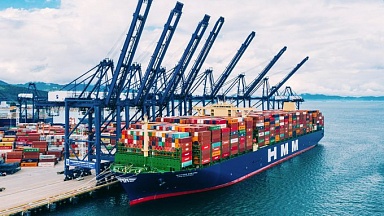This report looks particularly at the trade and mutual opportunities for Asia’s growth economies — China, India and the ten-member Association of Southeast Asian Nations, ASEAN (Asia-3) — and five key markets in Europe — Germany, France, the UK, the Netherlands and Ireland (Europe-5). ASEAN may not operate as a group like the European Union but as a trade bloc, its $3.66 trillion collective GDP in 2022 makes it the fifth largest economy in the world behind the United States, China, Japan, and Germany. ASEAN is also growing faster than any other major Asia-based groupings.
GDP growth forecasts over the period 2023-2028 for China, India and ASEAN demonstrate considerable potential, with annual growth projections of 5.2% in 2023 to 3.4% in 2028 for China and 5.9% to 6% for India. ASEAN’s ten economies are forecast to grow 4.2% on average in 2023 to 4.5% in 2028, with Singapore hovering between 1.5% and 2.5% over the six-year period and Cambodia, the Philippines, and Vietnam averaging around 6.3%.
Growth for the major economies of Europe is less strong, with average annual predictions for Germany, France, the UK and the Netherlands ranging between 0.9% and 1.7%.
FDI inflows for the two continents also present varied stories. Within Asia, China and Singapore alone accounted for 50% of FDI inflows in 2022, with $189 billion and $141 billion, respectively.3 Growth in FDI for India and other ASEAN economies was a mixed bag with five out of the 10 dipping. In Europe, FDI inflows suggest inward investment is in decline.
Trade data point to large flows between Asia (as a continent of 50 countries) and Europe overall, but Asian dependence on European imports is sliding.
Tapping into opportunities: Europe’s investments in China’s digital economy
China in 2022 released a 5-year plan to grow its already formidable digital economy. The government estimates that by 2025, the added value of core digital economy industries will account for 10% of GDP, up from 7.8% in 2020. While the plan highlighted the need to enhance self-reliance in the development of key products, there are opportunities for businesses and investors from outside the country. In terms of cross-border M&A sales, the largest deals included the $4 billion acquisition by Germany’s BMW of a further 25% stake in BMW Brilliance Automotive, a Beijing-based manufacturer and wholesaler.
As this report has demonstrated, there are numerous opportunities for European corporates and investors to tap into growing Asian markets and for Asian investors to find and expand markets in Europe. Fertile areas for inter-continental interaction have been identified as energy, talent, sustainability, technology, and economic and social development. European companies will continue to look to Asia for the manufactured goods and resources they need to grow their own economies. China is a particularly prominent Asian exporter to Europe within the electronic equipment, manufactured goods, and machinery and electricity sectors, and the EU and UK remain committed trading partners.
In the other direction, European investors will see particularly strong opportunities in Asia within the digital economy space.



